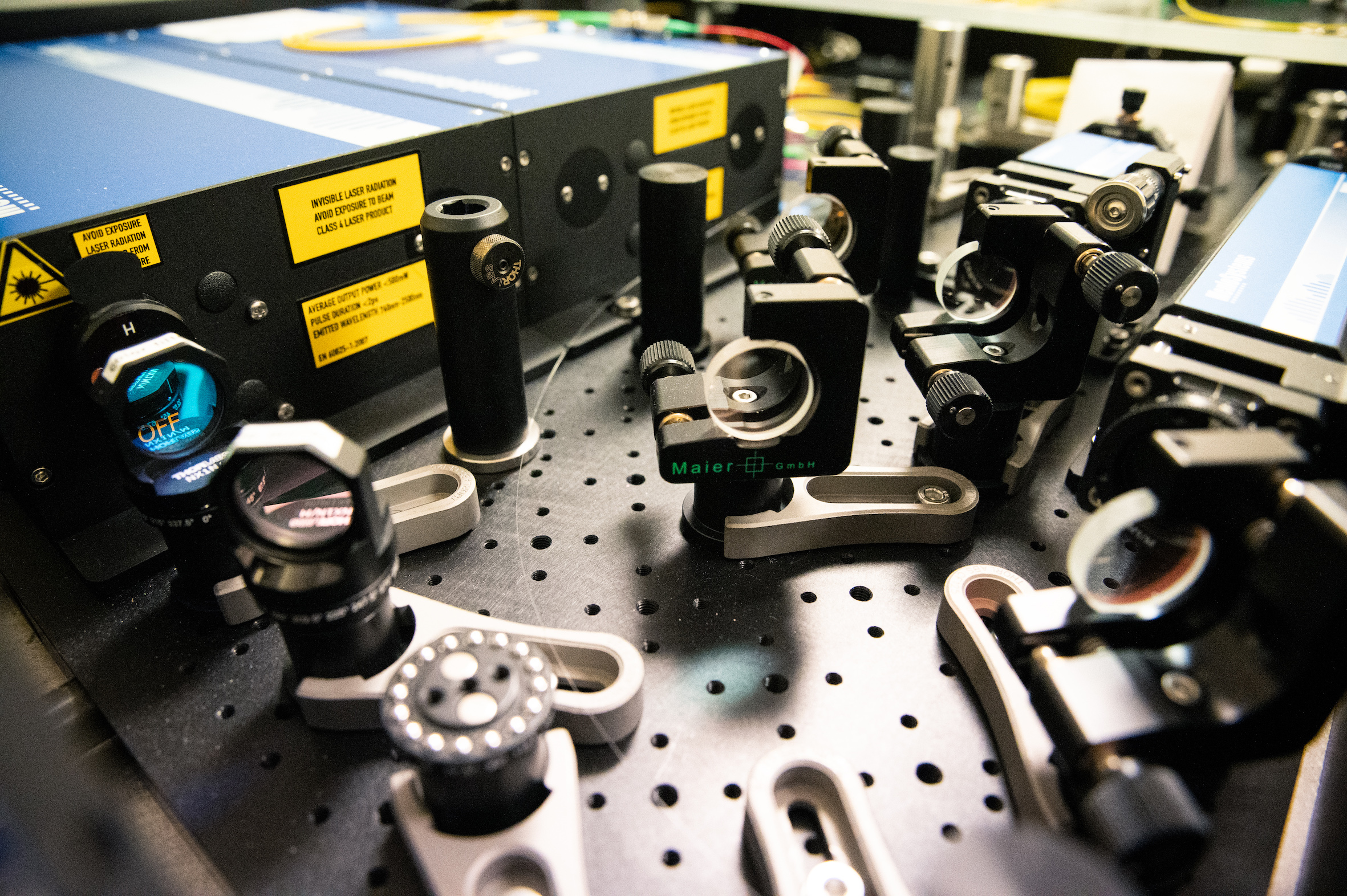Passively stabilized, All-fibre, Optical Frequency References
High precision optical metrology requires the development and deployment of highly coherent laser sources. The wavelength stability of laser sources can be further improved using optical frequency references. Typically, optical frequency references are extremely well aligned optical instruments, and are actively isolated to prevent mechanical and thermal disturbances in order to maintain their performance.
At the Applied Metrology Laboratory, we have been working on passively stabilised optical fibre interferometers to act as an optical frequency reference, a design initially developed at the National Measurement Institute (NMI). Due to the physical robustness of optical fibre and their passive design, these systems may be engineered to be cheap, compact and field deployable.
 The fibre frequency reference consists of a 15 km interferometer and is situated inside a nested passive insulation structure constructed from aluminium and polystyrene. The interferometer here has been packaged with electrical tape to ensure no fibre movement once the chamber is enclosed.
The fibre frequency reference consists of a 15 km interferometer and is situated inside a nested passive insulation structure constructed from aluminium and polystyrene. The interferometer here has been packaged with electrical tape to ensure no fibre movement once the chamber is enclosed.
In order to achieve the necessary frequency stability, we must suppress technical noise sources of optical fibre, including the rejection of scattered light and correction for polarisation drift. This is facilitated using digital interferometric methods to gate and track these effects, removing them in post-processing. The digital interferometric readout also enables the phase tracking of this interferometer to be continuously tuneable, and retain a large dynamic range, further adding to the flexibility of this system.
We are currently in the process of implementing a mechanical redesign to the current (6th) generation of fibre frequency reference. This current generation is the first to combine several digital signal processing subsystems into one design and aims to target broadband frequency operation at 1 Hz/rt(Hz), ranging from kHz to mHz Fourier frequencies. With this level of frequency stability, the fibre frequency reference becomes a viable alternative to actively stabilised ULE optical cavities.
The AML laboratory also houses and operates a Menlo Systems optical frequency comb. This is used in conjunction the fibre frequency references to further extend their range of operation and calibrate for low frequency thermal drift. The frequency comb operates at 1550 nm and has extensions to the visible 530 nm to 900 nm window. It is currently stabilised to a Rubidium atomic standard and in combination with our high precision wavelength meter is used for absolute wavelength metrology and calibration for our spectroscopic and gyroscope sensing work.
 The optical frequency comb system housed and operated by the Applied Metrology Lab is used as a long-term optical reference across all AML projects. It is also used as an absolute wavelength reference for the calibration of our spectroscopy systems. Here we see the output of the second harmonic generation stage, used for the visible wavelength expansion.
The optical frequency comb system housed and operated by the Applied Metrology Lab is used as a long-term optical reference across all AML projects. It is also used as an absolute wavelength reference for the calibration of our spectroscopy systems. Here we see the output of the second harmonic generation stage, used for the visible wavelength expansion.




